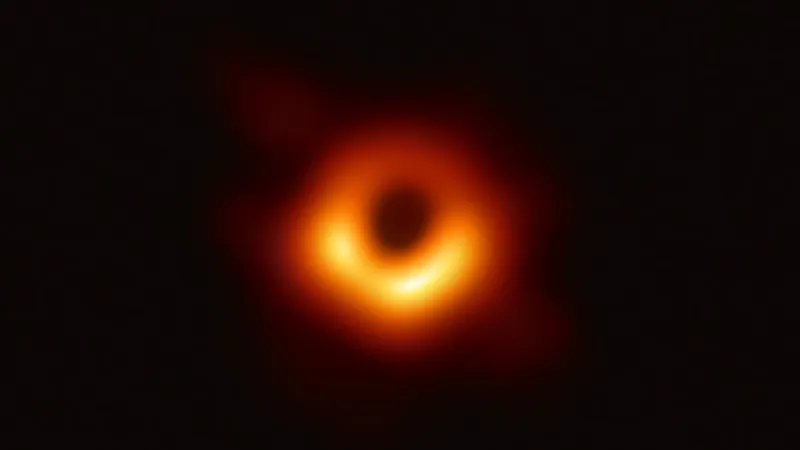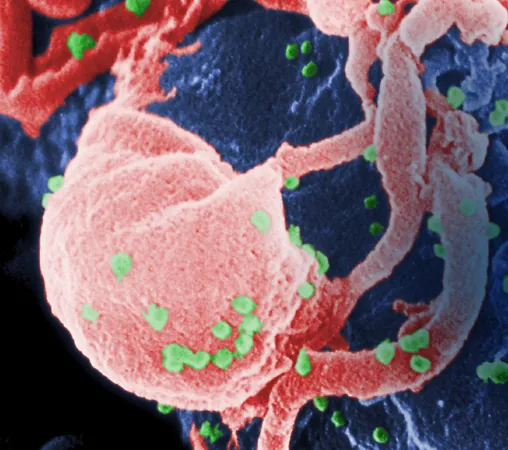
Shocking Revelation: The Image of Our Milky Way's Black Hole May Not Be What We Thought!
2024-10-30
Author: Siti
Introduction
What does our galaxy's supermassive black hole, known as Sgr A* (Sagittarius A*), look like? This seemingly straightforward question has led scientists on a challenging journey into the depths of the cosmos. Located a staggering 26,000 light-years from Earth, Sgr A* was successfully imaged by the Event Horizon Telescope (EHT) in 2022, resulting in a famous fuzzy orange doughnut-shaped silhouette.
New Findings
However, new findings from a group of scientists at the National Astronomical Observatory of Japan (NAOJ) may challenge our previous understanding of this iconic image. Their independent analysis suggests that the doughnut appearance of Sgr A* could be influenced by artifacts from the imaging techniques used, leading to the possibility that the black hole's actual shape is more elongated than depicted.
Makoto Miyoshi, the lead researcher of this analysis, commented, "No telescope can capture an astronomical image perfectly. We hypothesize that part of the observed ring structure is an artifact, rather than an accurate representation of the black hole's true characteristics." This revelation raises questions about the accuracy of one of the most extraordinary achievements in modern astronomy.
The Event Horizon Telescope
The EHT project is a collaboration of over 400 researchers from 13 institutions worldwide, utilizing a network of eight telescopes to create a virtual Earth-sized telescope. Because of this limited network, data gaps were expected. Katie Bouman, an assistant professor at the California Institute of Technology, compared the process to listening to an incomplete song on a piano missing several keys.
The EHT initially gained fame in 2019 by revealing the very first image of a black hole, which belongs to the M87 galaxy. The task of imaging Sgr A*, however, was more complicated due to its smaller mass—1,600 times lighter than M87*—and the rapid movement of material surrounding it. As Bouman described, "Sgr A* behaves like an ever-moving toddler, making it a challenge to capture a clear photograph."
Challenges in Imaging Sgr A*
Moreover, cosmic dust and gas obstructing the view from Earth added to the challenge, distorting the signals received by the telescopes. To compensate for these effects, the EHT team used advanced algorithms to reconstruct images that could account for the chaotic environment surrounding Sgr A*.
Alternative Analytical Methods
In a twist of technological innovation, Miyoshi and his team have put forward alternative analytical methods to understand the EHT data, leading to insights about the accretion disk surrounding the black hole. Their findings indicate that the disk could be slightly elongated and exhibits an intriguing brightness difference, potentially due to Doppler effects, suggesting the eastern half of the disk is moving towards us at approximately 60% of the speed of light!
Future Implications
As cosmological technology continues to advance, astronomers emphasize the importance of ongoing studies to gain clearer insights into the mysteries surrounding Sgr A* and other black holes in the universe. The forthcoming improvements in telescope capabilities promise to provide even more detailed images in the future, allowing scientists to sharpen their understanding of these enigmatic cosmic entities.
Conclusion
Stay tuned as we uncover more astonishing discoveries that challenge what we think we know about the universe!




 Brasil (PT)
Brasil (PT)
 Canada (EN)
Canada (EN)
 Chile (ES)
Chile (ES)
 España (ES)
España (ES)
 France (FR)
France (FR)
 Hong Kong (EN)
Hong Kong (EN)
 Italia (IT)
Italia (IT)
 日本 (JA)
日本 (JA)
 Magyarország (HU)
Magyarország (HU)
 Norge (NO)
Norge (NO)
 Polska (PL)
Polska (PL)
 Schweiz (DE)
Schweiz (DE)
 Singapore (EN)
Singapore (EN)
 Sverige (SV)
Sverige (SV)
 Suomi (FI)
Suomi (FI)
 Türkiye (TR)
Türkiye (TR)